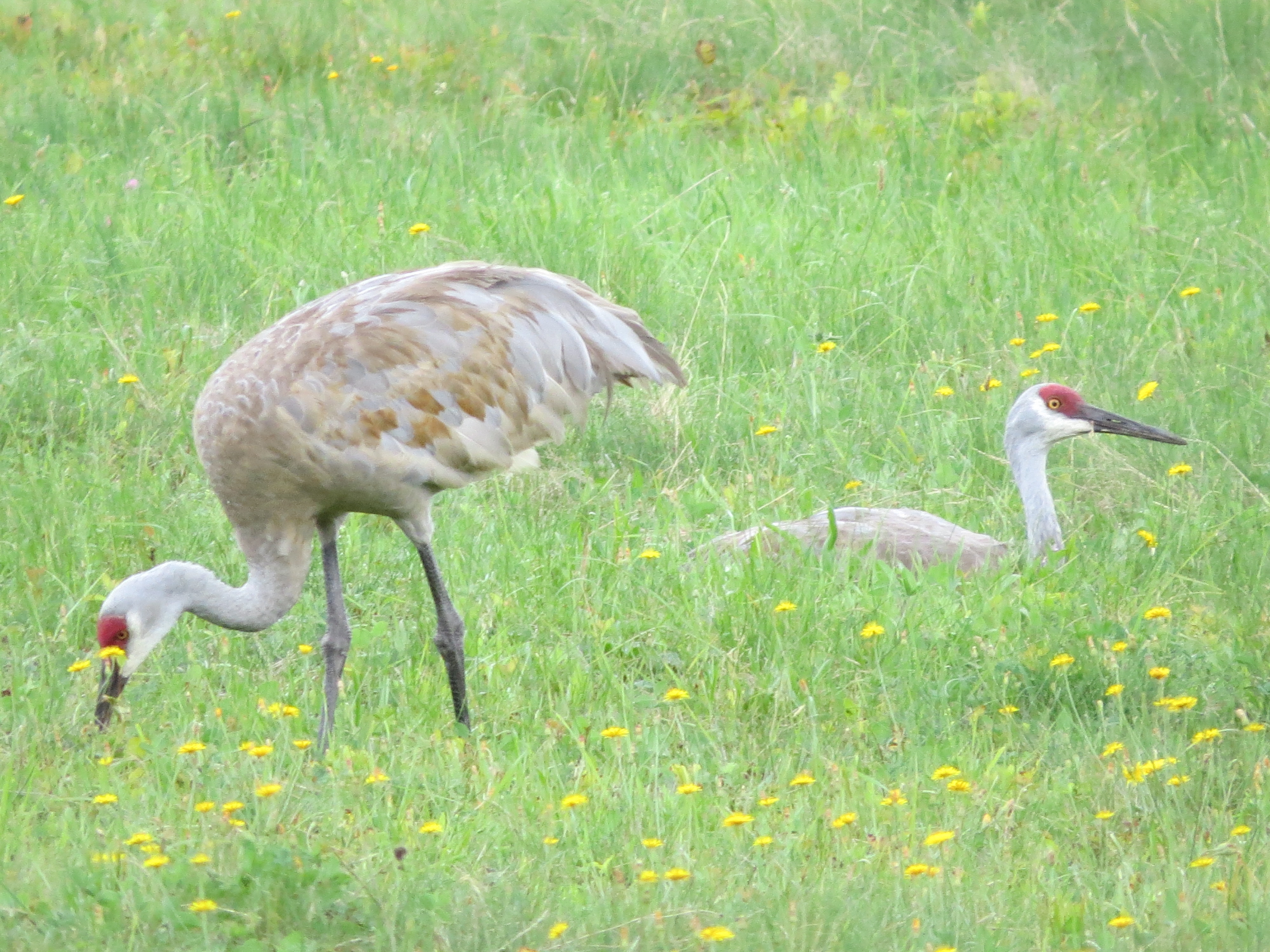
Successfully nest in the Adirondacks
Exciting Bird News!
This summer, a new species has been added to the list of breeding birds of the Adirondacks. A pair of Sandhill Cranes nested in the marsh between the Raquette River and Simon Pond in Tupper Lake (Franklin Co.), successfully raising two young.
A pair of Sandhill Cranes spent the 2015 breeding season in Tupper Lake (likely the same pair that nested this spring/summer). Last year, the cranes were observed in the marsh between the Raquette River and Simon Pond, and often foraging in fields along Dugal and Stetson Roads. (See my 2015 Sandhill Crane blog on this site.)
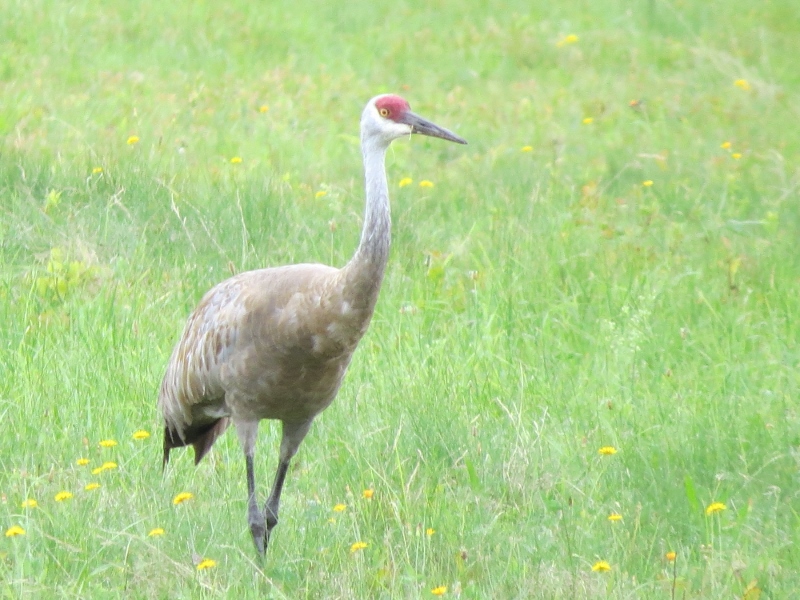
The Sandhill Crane pair returned to Tupper Lake in early April. I observed the pair on April 10, 2016 in the same marsh while parked along Raquette River Drive.
This year, there were no observations of the Sandhill Crane pair foraging in the open fields along Stetson and Dugal Roads during April, May, and June, so I assumed they were likely nesting in the marsh. On June 30, 2016, I stopped along Raquette River Drive and observed an adult Sandhill Crane with a chick (also called a “colt”) at the edge of the marsh.
A Sandhill Crane pair usually has one or two chicks. If they have two chicks, the parents each take a chick and keep them separated when foraging. Scientists believe this likely reduces sibling aggression and minimizes the likelihood that one predator could get both chicks.
A few days after my June observation, on July 3, 2016, while guiding a group of 11 people from NYC Audubon, we stopped along Raquette River Drive and observed both Sandhill Crane adults with two young in the marsh at the edge of Simon Pond! Several people recorded video of the Sandhill Crane family.
The NYC Audubon group had a large vehicle with a step-ladder for entry. It was difficult to view the Sandhill Cranes through all the vegetation, so we used the step-ladder and expanded our viewing scope legs as long as they would go. Climbing stairs to look through a tall scope in the middle of Raquette River Drive was a comical sight for the residents along the road!
As summer progressed, I kept an eye on the fields along Stetson and Dugal Roads assuming that the cranes might visit these locations once the young could fly. On August 18, 2016, I received a message from a Tupper Lake resident letting me know the Sandhill Cranes were spending time in the blueberry fields along Dugal Road. She was both observing and hearing them. I visited Dugal Road on August 20, 2016 with friends who were staying with us, and we immediately found the Sandhill Crane family – just a few feet from us at the edge of the field! The cranes appeared nervous when our car stopped, so we drove on and used my scope to view them from a long distance away. They appeared to be finding plenty to eat in the field.


On August 28, 2016, I found the Sandhill Crane family foraging in a field along Stetson Road.
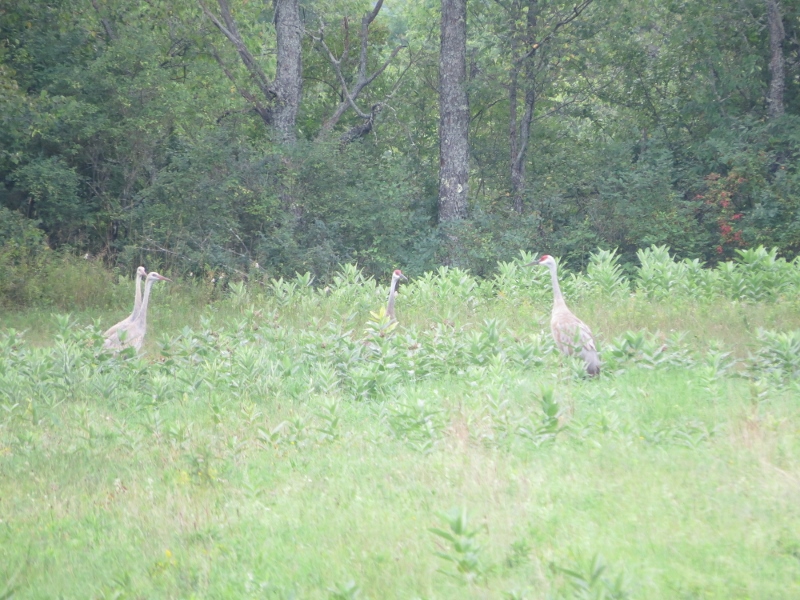
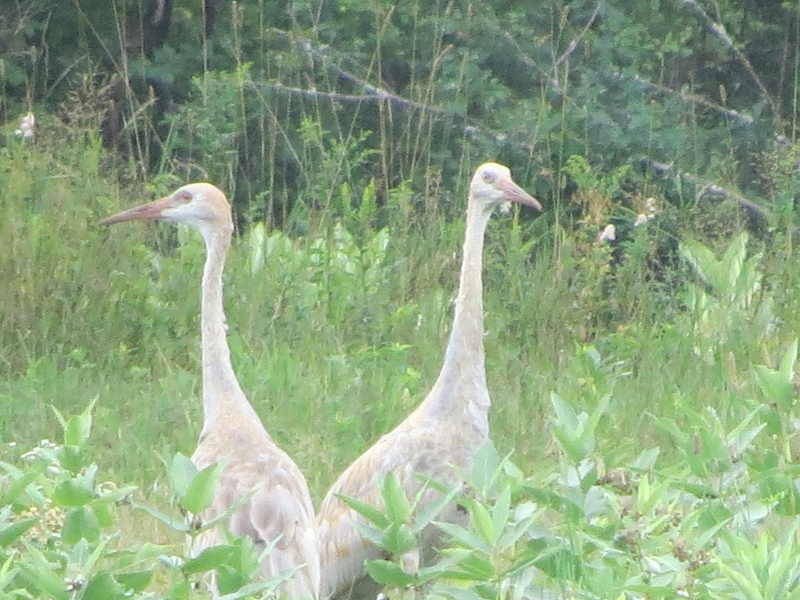
A Relatively New Species for New York
The first breeding record for Sandhill Crane (Grus canadensis) in New York was established on June 5, 2003, when a pair of cranes with a chick was spotted in the North Montezuma Management Area in Central New York. Sandhill Cranes have been increasing in population and expanding their breeding range eastward into New York from the upper mid-west and Canada.
Perfect Habitat
The habitats in Tupper Lake – the marsh between the Raquette River and Simon Pond, and the open fields along Stetson and Dugal Roads – are perfect for Sandhill Cranes. Standing water with growing vegetation is their preferred habitat for nesting and the open fields offer foraging areas. Sandhill Cranes mate for life and stay with their partner year-round. The female typically lays two eggs, but usually only one nestling survives to fledge. The Tupper Lake Sandhill Cranes were quite successful in raising two young.
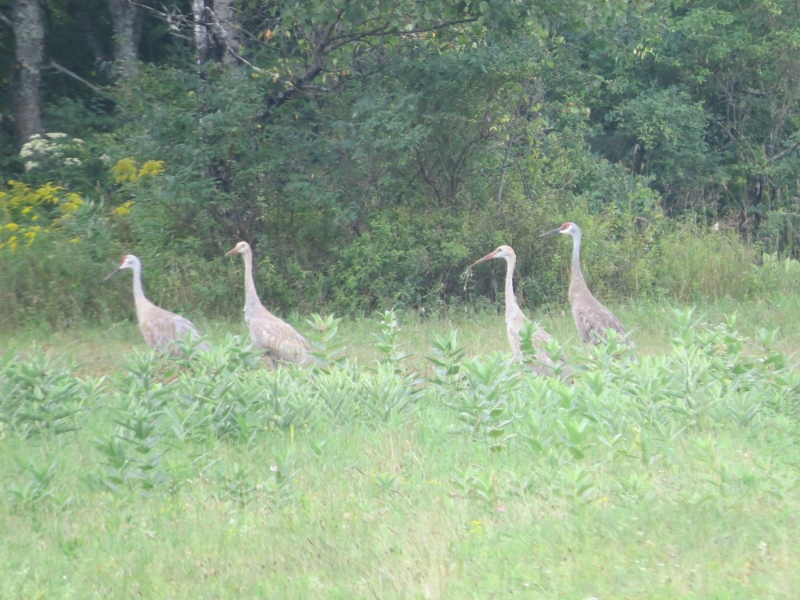
Tupper Lake Sandhill Crane Family
The Sandhill Crane family in Tupper Lake will likely be around until early October. Watch for them foraging in the fields along Dugal and Stetson Roads. The two juveniles will stay with the adults through the spring migration. Young Sandhill Cranes begin associating with their peers in a non-breeding flock soon after leaving their parents. The adult Sandhill Crane pair will likely return to Tupper Lake next April to once again breed in the marsh between the Raquette River and Simon Pond.
The elegant Sandhill Cranes are a wonderful new addition to the list of breeding species that birders can now find in the Adirondacks.
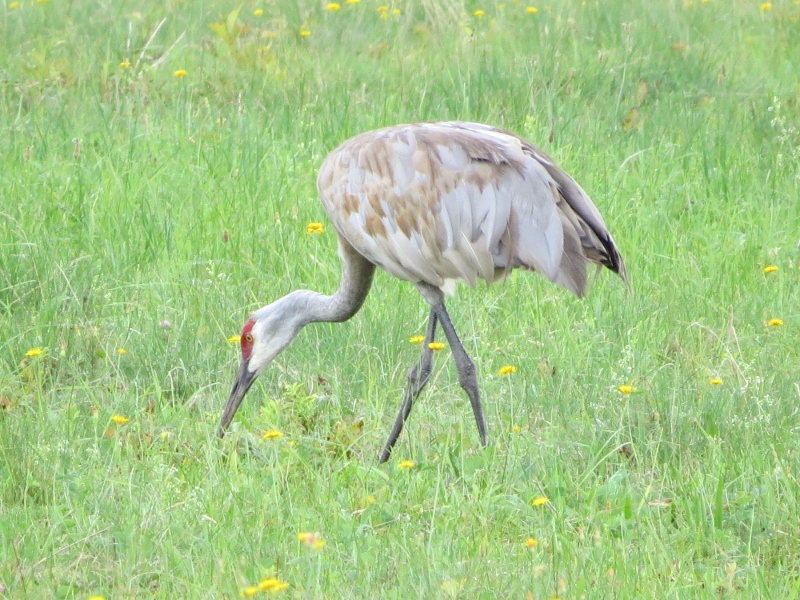
In addition to viewing the Sandhill Cranes, there are terrific places to go birding and many other fun things to do in Tupper Lake, including a visit to the nearby Wild Center. Tupper Lake also offers comfortable accommodations and delicious places to dine.
